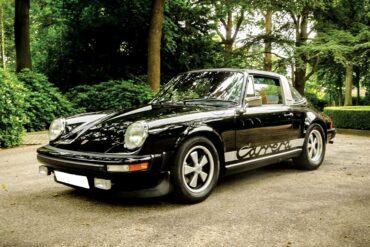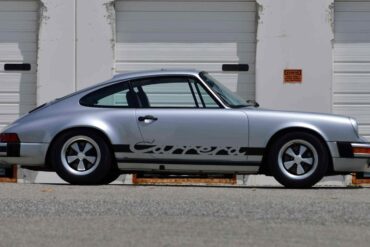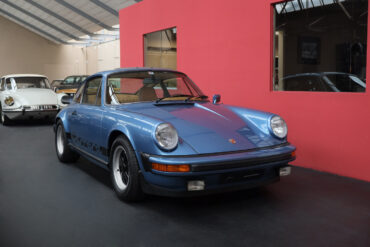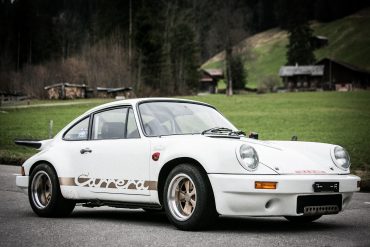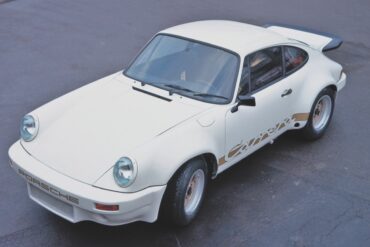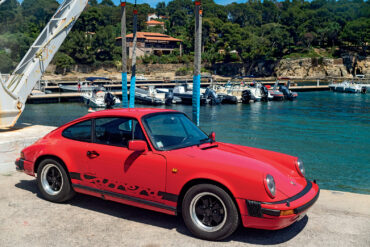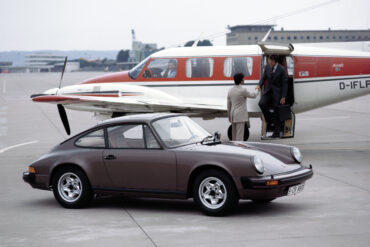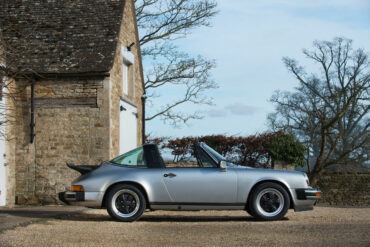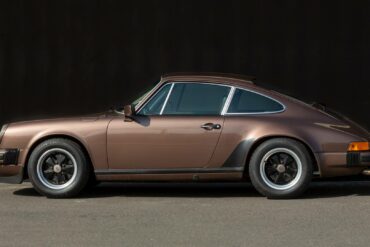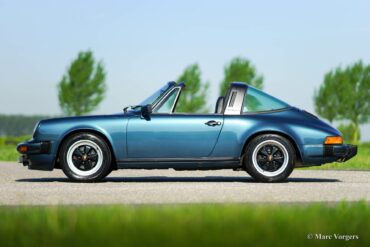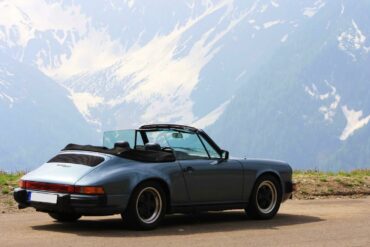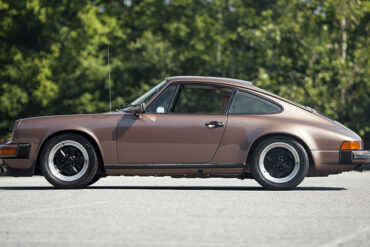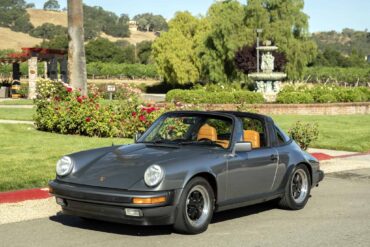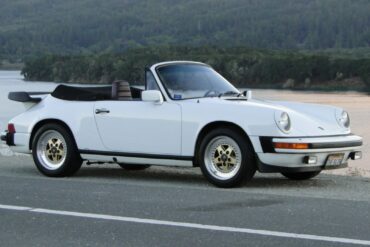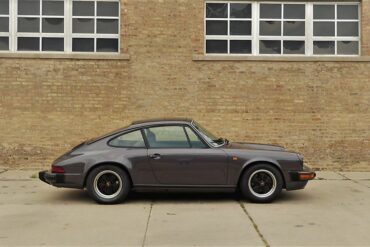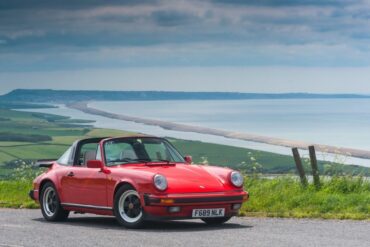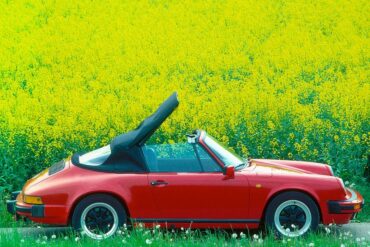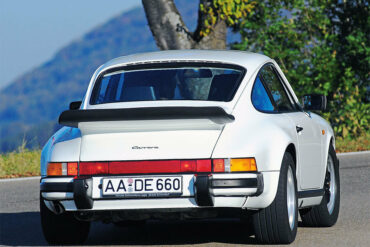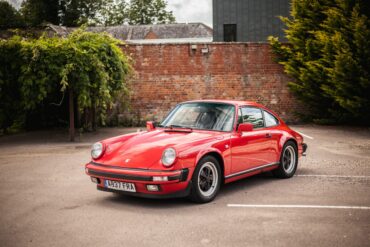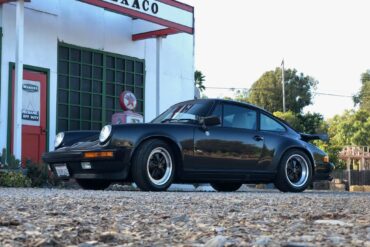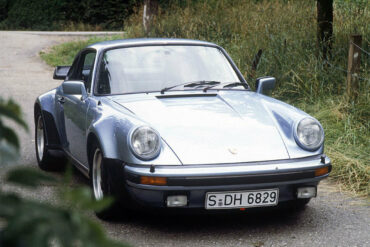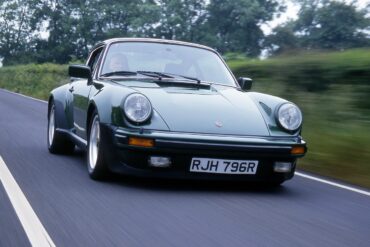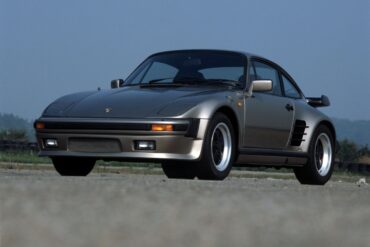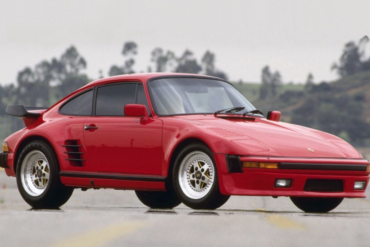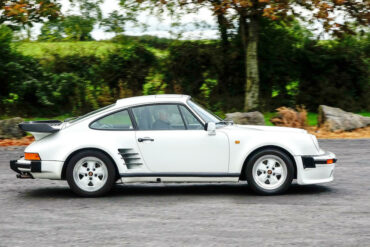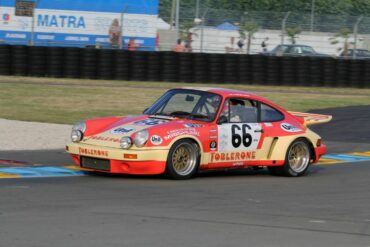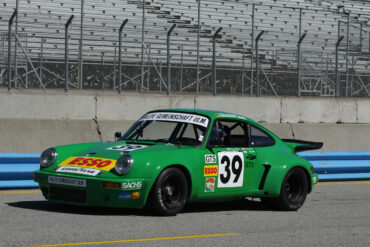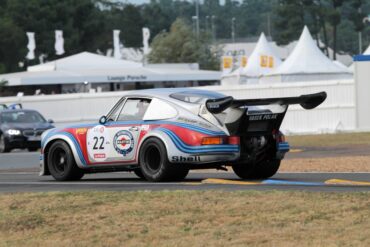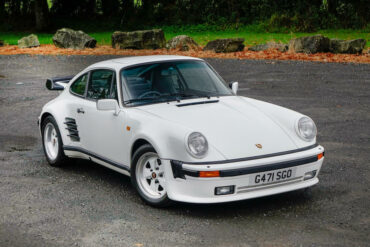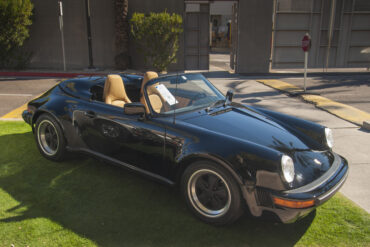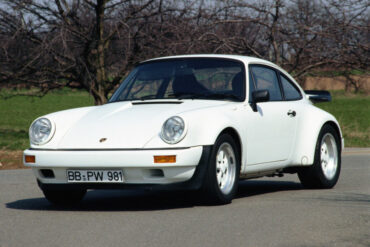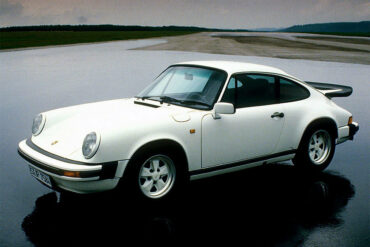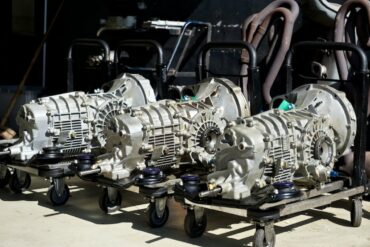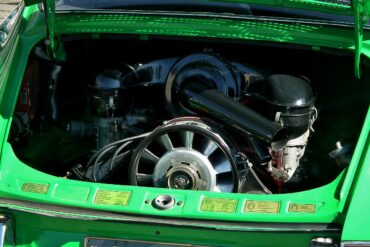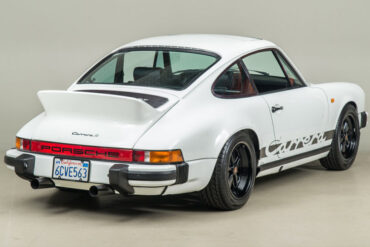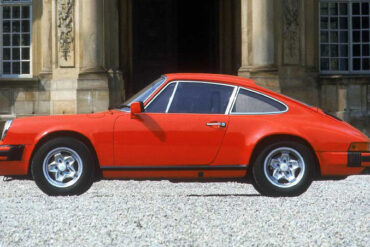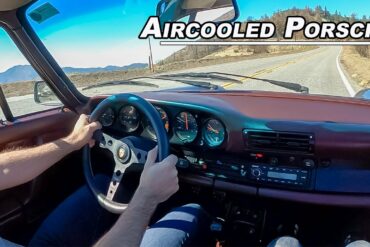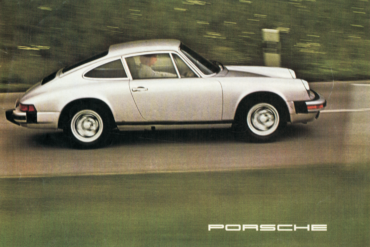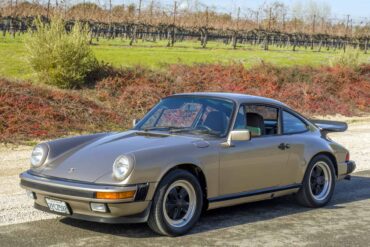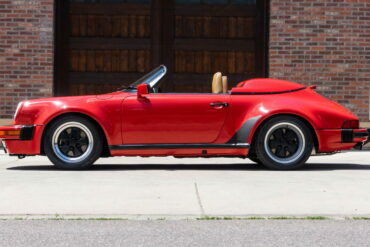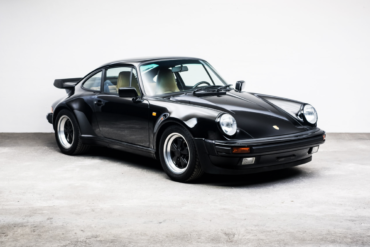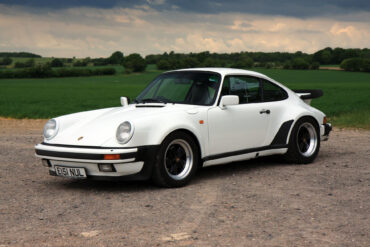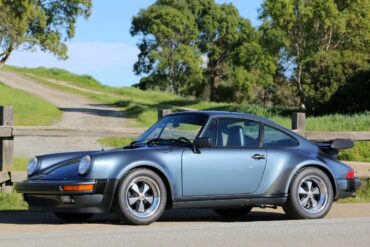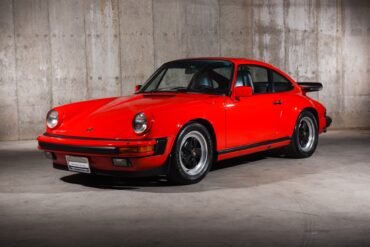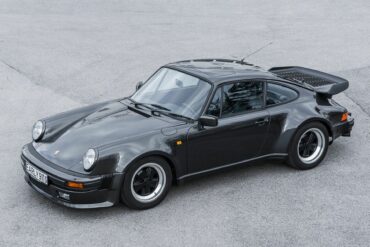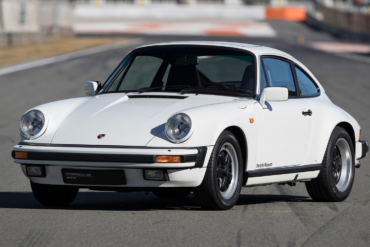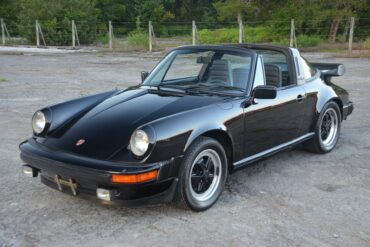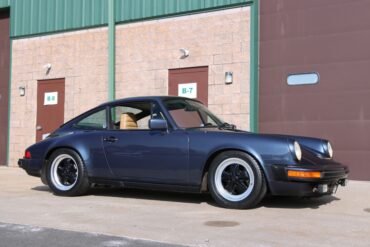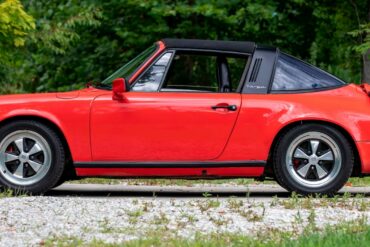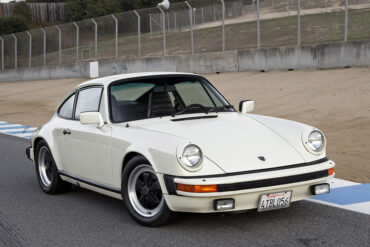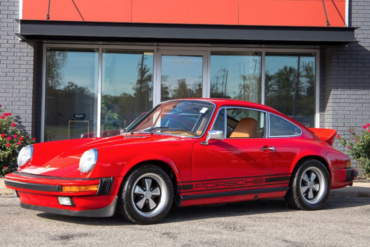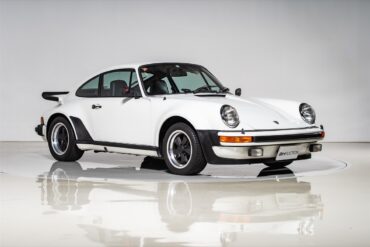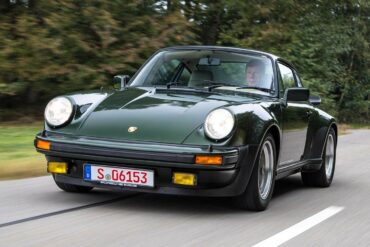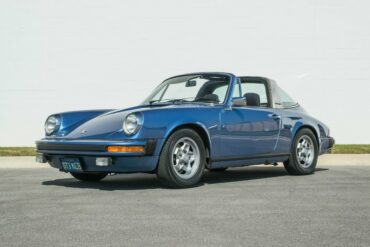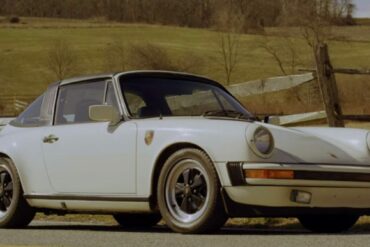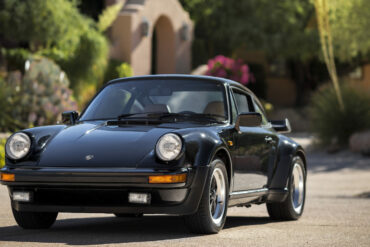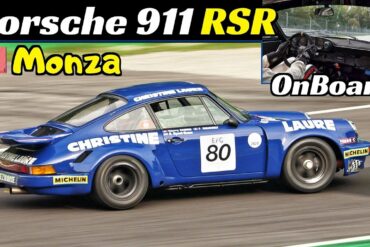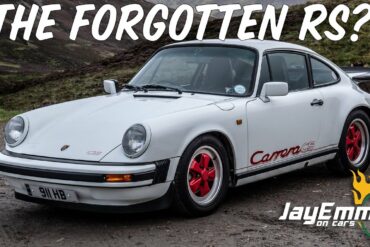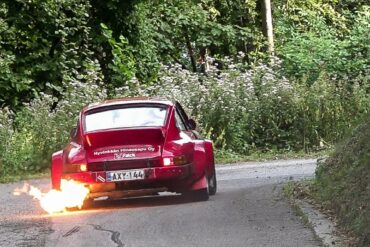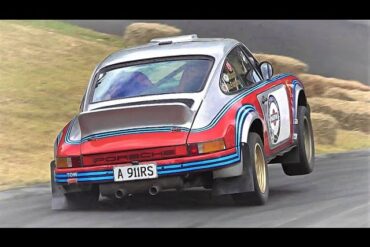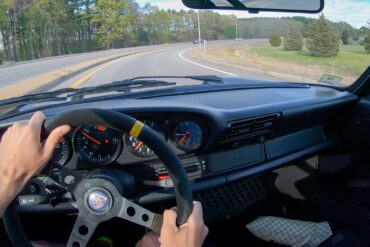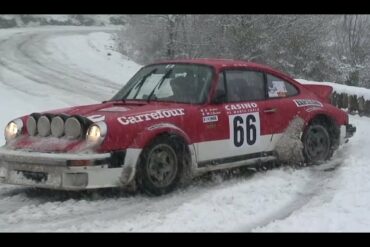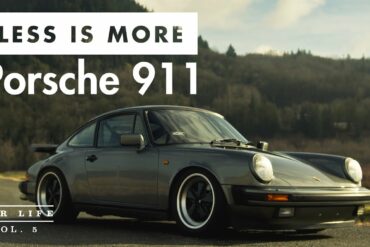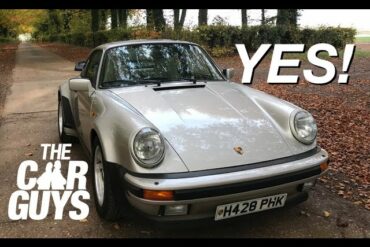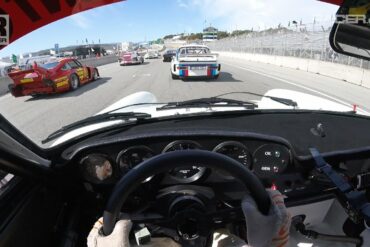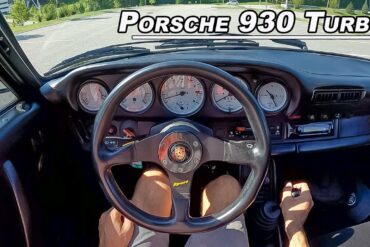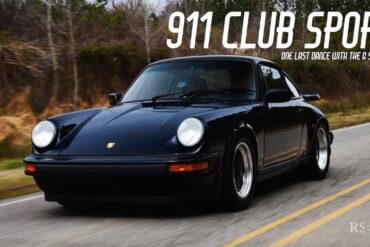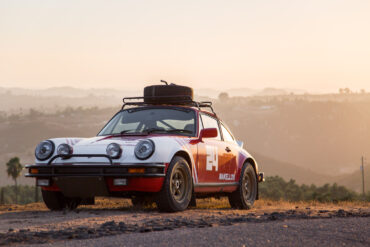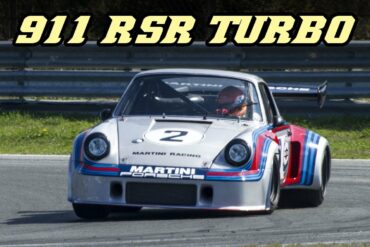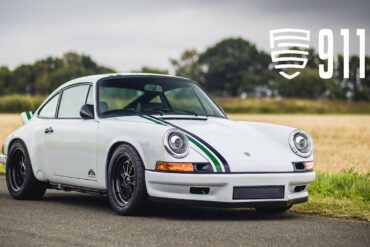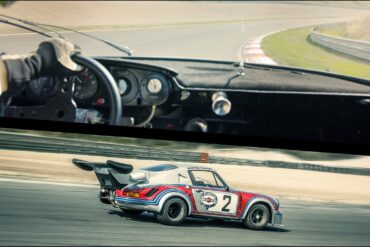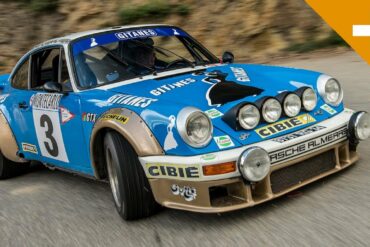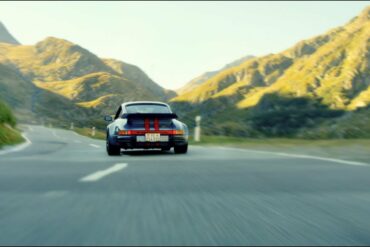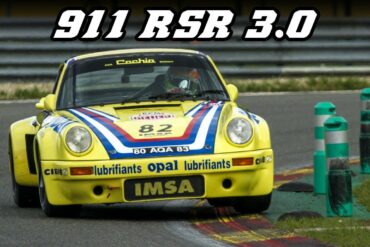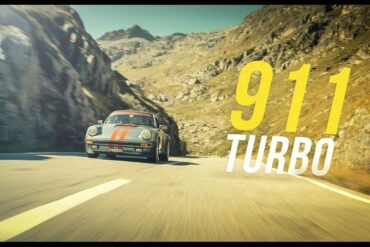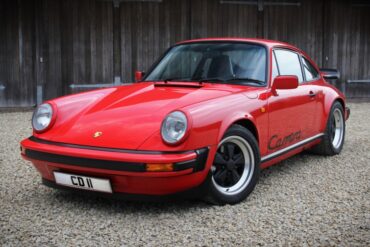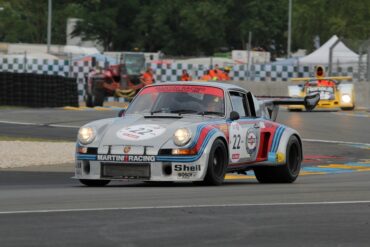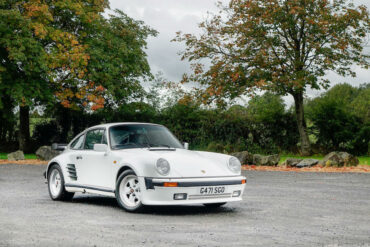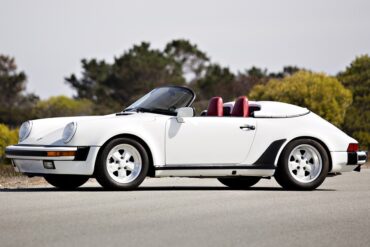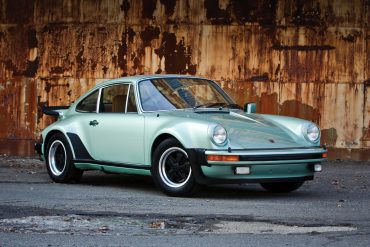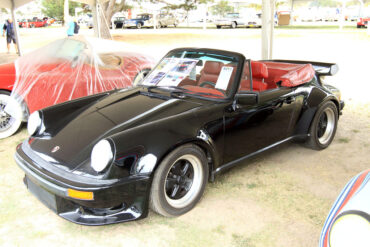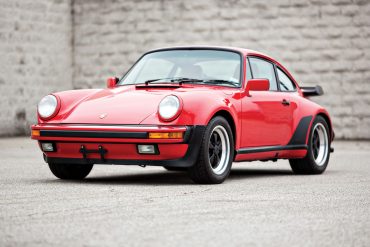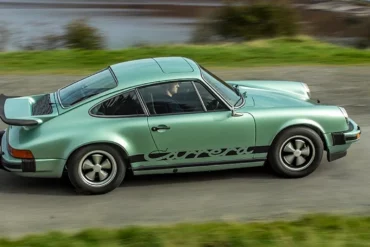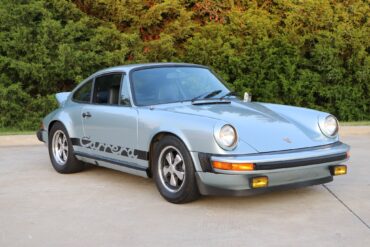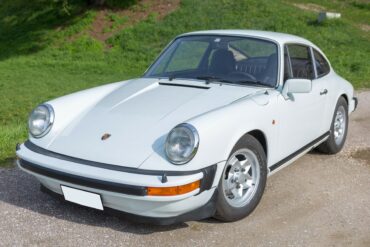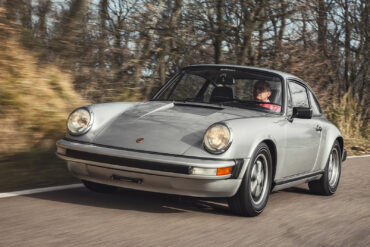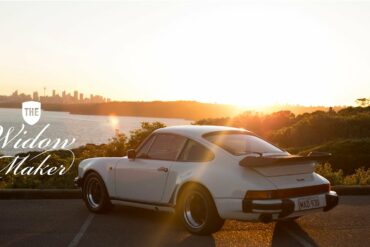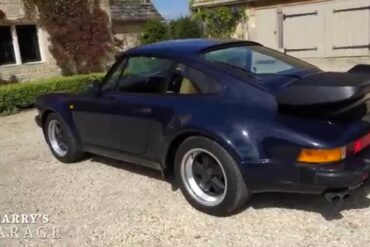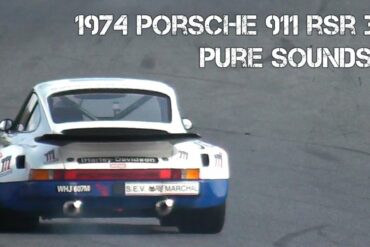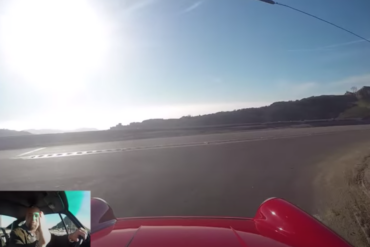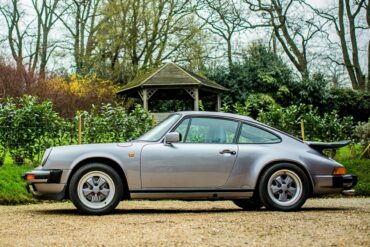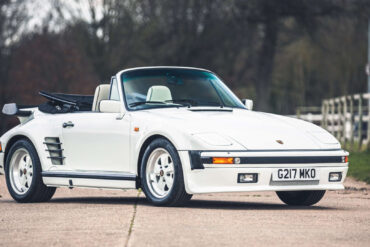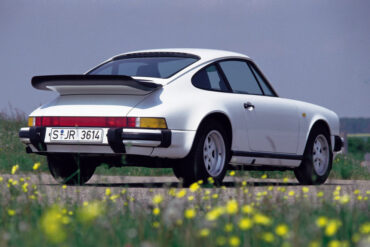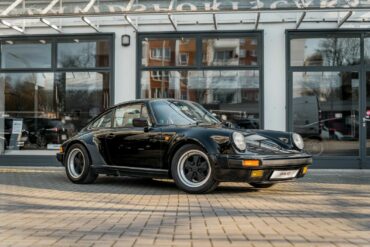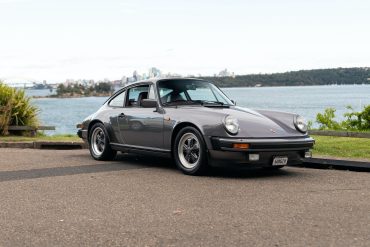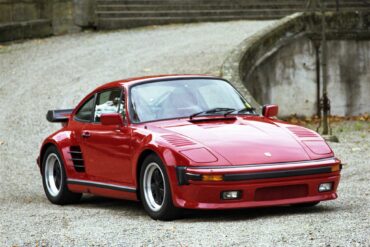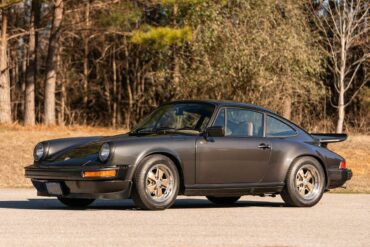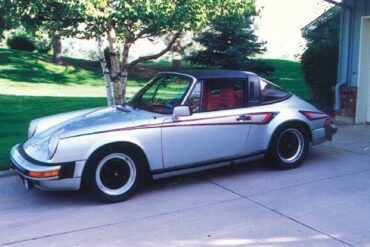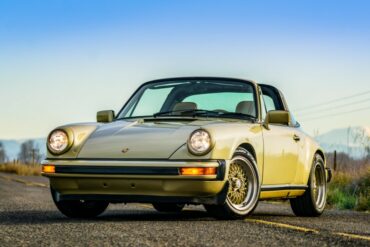1974 – 1975 Porsche 911 Carrera 2.7 Targa Pictures & Gallery...
1974 – 1975 Porsche 911 Carrera Coupe Pictures & Gallery...
1974 – 1975 Porsche 911 Carrera Technical Specifications Production Years 1974 – 1975 Built At Stuttgart, Germany Price $ $13,575...
1974 Porsche 911 Carrera RS 3.0 Pictures & Gallery...
1974 Porsche 911 Carrera RS 3.0 Technical Specifications Engine 3.0L Aircooled Flat 6 Configuration Flat-6 Driven wheels Rear Engine / RWD...
1976 – 1977 Porsche 911 Carrera 3.0 Technical Specifications Type 2+2 FHC Number of doors 2 Engine 3.0 L Aircooled...
As a successor to the Carrera 2.7 MFI, the Carrera 3.0 was fitted with a variation of the 930's engine without a Turbo. During its production period only 3,687 cars were made. The Carrera 3.0 was replaced by the Porsche 911 SC for model year 1978. Between 1976 and 1977, Porsche introduced the Carrera 3.0 with wide rear flares, optional whale-tail, and other luxury options. Built before the ‘911 SC’ it has everything the SC has, and more. It’s a different drive with more power @200bhp; more torque @188 ft/lb @4200rpm and it was 10% lighter too.
1976-1977 Porsche 911 Carrera 3.0 Targa Pictures & Gallery...
1976-1977 Porsche 911 Carrera 3.0 Coupe Pictures & Gallery ...
1978-1983 Porsche 911 SC Targa Pictures & Gallery ...
1983 Porsche 911 SC Cabriolet Pictures & Gallery ...
1978-1983 Porsche 911 SC Coupe Pictures & Gallery...
1978 – 1983 Porsche 911 SC Targa Technical Specifications Type Series Production Car Built At Stuttgart, Germany Price $ $34,450...
1983 Porsche 911 SC Cabriolet Technical Specifications Type Series Production Car Production Years 1978 – 1983 Built At Stuttgart, Germany...
1978 – 1983 Porsche 911 SC Coupe Technical Specifications Type Series Production Car Production Years 1978 – 1983 Built At Stuttgart,...
1984-1989 Porsche 911 Carrera 3.2 Targa Pictures & Gallery...
1984-1989 Porsche 911 Carrera 3.2 Cabriolet Pictures & Gallery...
1984 – 1989 Porsche 911 Carrera 3.2 Technical Specifications USA-Market Cars Engine USA (1984 – 1986) USA (1987 – 1989)...
1984-1989 Porsche 911 Carrera 3.2 Coupe Pictures & Gallery ...
For 1989, Porsche produced the 25th Anniversary Special Edition model to mark the 25th year of 911 production. The 1989 Porsche brochure lists production of 500 U.S. market cars, of which 300 were coupés (240 in silver metallic paint and 60 in satin black metallic), and 200 cabriolet models (160 in silver and 40 in black). All had "silk grey" leather with black accent piping and silk grey velour carpeting. Includes small bronze "25th Anniversary Special Edition" badges.
1978 – 1989 Porsche 911 Turbo 3.3 (930) Technical Specifications Number of cylinders Boxer 6 Engine Code 930/60/66 Fuel type...
1975 -1977 Porsche 911 Turbo 3.0 (930) Technical Specifications Type Series Production Car Production Years 1974 – 1979 Built At...
1981-1989 Porsche 911 Turbo 3.3 SE ‘Flachbau’ Pictures & Gallery ...
1987 -1989 Porsche 911 Turbo 3.3 SE ‘Flachbau’ Technical Specifications Type Series Production Car Built At Stuttgart, Germany Production 800...
1989 Porsche 911 Turbo LE Pictures & Gallery...
1974 – 1975 Porsche 911 Carrera RSR 3.0 Pictures & Gallery ...
1974 -1975 Porsche 911 Carrera RSR 3.0 Technical Specifications Engine Configuration 911/75 B6 Location Rear, longitudinally mounted Construction magnesium alloy...
1974 Porsche 911 Carrera RSR Turbo 2.1 Technical Specifications Engine Location Rear Drive Type Rear Wheel Body / Chassis Monocoque...
1989 Porsche 911 Turbo Limited Edition (911) Technical Specifications Engine Flat 6 Position Rear Longitudinal Aspiration Natural Fuel Feed Bosch...
1989 Porsche 911 3.2 Speedster (911) Technical Specifications Price $ USD $65,480 Engine Air-cooled Flat-6 Valvetrain SOHC Displacement 3164 cc...
1984 Porsche 911 SC RS (911) Technical Specifications Model 911 SC/RS – Type 954 Year 1984 Engine 6-cylinder, horizontally opposed...
1987 – 1989 Porsche 911 Carrera 3.2 Clubsport (911) Technical Specifications Model 3.2 Clubsport Year 1987 – 1989 Price When...
Porsche 911 (G-Series) Transmission Codes The transmission number code is found on the transmission data plate. Transmission codes 911/912 G-model...
Porsche 911 (Early Years & G-Series) Engine Codes By the time the G-Series was release, the standard engine was now...
1965 – 1989 Porsche VIN Numbers Porsche used a variety of chassis and VIN numbering systems until 1981, when a...
Porsche 911 (G-Series) (1973 – 1989) Story & History G-Model – The 2nd Generation Porsche 911 Premiere: September 12, 1973...
POV In A Great Sounding 911 GVBC is a car enthusiasts dream! Every Friday morning a group of dedicated drivers...
Porsche 911 Sales Brochures (2nd Generation – G Series) Clearly going back this far, sales catalogs for Porsche cars are...
Porsche 911 Spare Parts Catalogs (G-Series, 1974 – 1989 Model Year) These official Porsche PET Diagrams and codes for the G...
Essentially a Carrera 3.2 with a chopped, more steeply raked windscreen and hood, plus a stripped-out interior. Most had wide Turbo bodies. Porsche insisted that the simple hood was not designed to be 100 per cent watertight. The first Porsche 911 Speedster was built in 1989 and it was the last vehicle with the old 911 body. Three decades passed before the Speedster made a comeback. Had a 3.2 L Aircooled Flat 6 and 2274 were produced for the 1989 model year.
Porsche Option Codes – Porsche 911 (1989 Model Year) Looking to decode your 1989 Porsche 911 option codes? Want to...
Porsche Option Codes – Porsche 911 (1988 Model Year) Looking to decode your 1988 Porsche 911 option codes? Want to...
Porsche Option Codes – Porsche 911 (1987 Model Year) Looking to decode your 1987 Porsche 911 option codes? Want to...
Porsche Option Codes – Porsche 911 (1986 Model Year) Looking to decode your 1986 Porsche 911 option codes? Want to...
Porsche Option Codes – Porsche 911 (1985 Model Year) Looking to decode your 1985 Porsche 911 option codes? Want to...
Porsche Option Codes – Porsche 911 (1984 Model Year) Looking to decode your 1984 Porsche 911 option codes? Want to...
Porsche Option Codes – Porsche 911 (1983 Model Year) Looking to decode your 1983 Porsche 911 option codes? Want to...
Porsche Option Codes – Porsche 911 (1980 Model Year) Looking to decode your 1980 Porsche 911 option codes? Want to...
Porsche Option Codes – Porsche 911 (1979 Model Year) Looking to decode your 1979 Porsche 911 option codes? Want to...
Porsche Option Codes – Porsche 911 (1978 Model Year) Looking to decode your 1978 Porsche 911 option codes? Want to...
Porsche Option Codes – Porsche 911 (1977 Model Year) Looking to decode your 1977 Porsche 911 option codes? Want to...
Porsche Option Codes – Porsche 911 (1976 Model Year) Looking to decode your 1976 Porsche 911 option codes? Want to...
Porsche Option Codes – Porsche 911 (1975 Model Year) Looking to decode your 1975 Porsche 911 option codes? Want to...
Porsche Option Codes – Porsche 911 (1974 Model Year) Looking to decode your 1974 Porsche 911 option codes? Want to...
Porsche Option Codes – Porsche 911 (1982 Model Year) Looking to decode your 1982 Porsche 911 option codes? Want to...
Porsche Option Codes – Porsche 911 (1981 Model Year) Looking to decode your 1981 Porsche 911 option codes? Want to...
Porsche 911 Carrera RSR (1974) by Historika – Monza Historic 2020 + OnBoard, 3-Litre Flat-Six Sound! This great and original...
The Best Driver’s Car Nobody Bought? Today I am driving a 911 Club Sport. A special version of the 3.2...
Best of Porsche Rally Cars Check out this compilation i made for one of the most recognizable racing car in...
Now That’s What I Call Driving This is Stuart McFarlane´s beautiful Porsche 911 SC Safari, a 1974 machine built to...
911 3.2 Carrera POV Run Onramps and Highway driving in my Aircooled 1988 Porsche 911 3.2 Carrera. Be sure to...
Best of Porsche Rally Cars...
There is nothing better Bitten by the car bug at an early age, Shawn was drawn around the aura of...
Porsche 930 Turbo – One of the Greats Remember that episode where Damian mistakenly bought a broken Porsche 911 from...
Is this the best driving classic 911? This is a great reviews of the 911 ClubSport. The 1987 Porsche 911...
POV Drive In A Porsche 911 3.0 Carrera RSR Factory Porsche racer Patrick Long has a million-dollar historic 911 3.0...
Modified Slant Nose Turbo (930) On Road The 930 Turbo being reviewed in the great POV video. Nice footage and a good...
Charles and Tim – One last dance with the G series. This is a great review of the 911 ClubSport....
A True Head Turner We included a car from Makellos Classics in a list of our favorite Porsche custom cars...
Porsche 911 Carrera RSR Turbo 2.1 On Track This is a 911 that wrote a big part of Porsche history....
The Ultimate Restomod? Paul Stephens has been restomodding classic Porsche 911s for years. The Le Mans Classic Clubsport is his...
Best On Track POV Video I’ve Ever Seen This Porsche 911 Carrera RSR being hammered on-track is the stuff of...
Passenger Ride In a Porsche 911 SC Henry Catchpole recently found himself in the passenger seat of the 1978 Monte...
Porsche 930 Turbo on the Great St. Bernard Mountain Pass The 930 Turbo on the Great St. Bernard Mountain Pass...
Great sound, great engine! Filmed at Circuit Spa-Francorchamps, Zolder and the Nürburgring between 2011-2017. Great compilation of on-track fun in...
Porsche 911 Turbo (930) The 930 Turbo on one of the greatest roads in the world. A short video, but...
1987 – 1989 Porsche 911 Carrera 3.2 CS Pictures & Gallery...
1974 Porsche 911 Carrera Turbo 2.1 Pictures & Gallery...
Only 50 units made. The 911 Turbo Limited Edition comes equipped with the 330 bhp power unit normally only available in the 911 Turbo with Sport Equipment. In addition, the fitment of a limited slip differential as standard ensures the the increased engine performance can be used to it’s fullest extent. This Limited Edition also adopts the rear wheel air intakes of the Sport Equipment version. Essentially an SE without a slantnose front.
1989 Porsche 911 Speedster Pictures & Gallery...
(1975 – 1977) Porsche 911 Turbo 3.0 Pictures & Gallery...
1987 – 1989 Porsche 911 Turbo 3.3 Cabriolet (930) Pictures & Gallery...
1978 – 1989 Porsche 911 Turbo 3.3 Coupe (930) Pictures & Gallery ...
In 1974 Porsche offered a high performance fuel injected Carrera specifically for the European market. These were close to 2.7 RS specification and are often referred to as the 2.7 or Euro Carrera. In many regards, this car is similar to the 1973 2.7 RS in touring trim, with its 210bhp 911/83 engine, but the 2.7 Carrera is based on the updated G-series body and interior. Later Carreras that reach American shores used had reduced power and throttle response compared to Euro counterparts.
In 1974, Porsche's performance version of the 911 was simply known as the 911 Carrera. It had new bumpers that complied to American regulations and the 2.7-liter engine from the Carrera RS 2.7. Other new features for 1974 included new seats, a full-width rear taillight. The Carrera deleted all the chrome off the car in favor of black window frames, wipers, doorhandles, but chrome could be ordered as an option. In 1976 Porsche replaced the Carrera with a new 3.0 liter variant.
Production of the second generation 911 started in August 1973. The 1974 model year G-series derivative replaced the outgoing 1973 model year F-series. Visually, the new 911 was given a major facelift and all three production variants now came with fuel-injected 2.7-litre engines. The entry level 911 had 150bhp, the mid-range 911 S offered 175bhp and the flagship 911 Carrera came with 210bhp. Once again, customers were given the choice of either Coupe or Targa body styles.
The base model Porsche 911, along with the 2.7 Liter 911S and Carrera 2.7, was introduced for the 1974 model year with many significant changes to meet legislative requirements around the world for both impact safety and emissions. It was available in Coupe and Targa variants, sporting engine Type 911/92 with K-Jetronic fuel injection, rated at 150 hp. For the 1975, the base model was discontinued in North America. ROW got Coupe and Targa variants, featuring engine Type 911/41 rated at 150 hp.
A Legendary Car “We’ve had Porsches in our family for decades…my father’s had a billion of them, I think,” says...
A Legend Reviews A Legendary Car...
Carrera RSR 3.0 Sounds Spectacular Porsche 911 Carrera RSR 3.0 in action! Natural Sound. 1974 Porsche 911 RSR 3.0 a...
Porsche 930 Turbo – One Take Matt tests a modified Porsche 930 Turbo making 150 hp more than stock! The...
In 1988, Porsche produced 875 examples of the CE or Commemorative Edition 911 Carrera in coupe, targa and cabriolet variants to mark the production of the 250,000th 911. Distinguishing features include special diamond blue metallic paint with color-matched Fuchs wheels, front and rear spoilers, and interior carpets and leather. These cars also featured Dr. Ferdinand Porsche's signature embroidered on the seats in the headrest area.
Just 50 ‘C16’ cars were manufactured for the UK-market, initially equipped with an uprated engine of 330bhp (from 300) mated to a 4-speed transmission. However, at the end of 1988, the uprated 5-Speed G50 gearbox was introduced, dramatically easing the peaks in power delivery by reducing the effects of ‘turbo-lag’. The factory SE also benefited from a dual-exit exhaust system, limited-slip differential, heated front seats and a sunroof.
The 911 Carrera Club Sport was Porsche refocusing on what they do best – high performance, lightweight motoring. This is probably the most underrated Porsche ever made. Manufactured between August 1987 and September 1989 only 340 cars. It had a blueprinted, high revving engine mated to a modified short-shift, close-ratio G50 gearbox. It had track-bias suspension modifications too.
Porsche introduced a new wide-body package option. Known as the M491 option it was commonly known as the "Turbo-Look". It gave the naturally aspirated cars the look and style of the 930 Turbo with wide wheel arches and the distinctive "tea tray" tail. It wasn't just about looks however, because M491 also got you the stiffer suspension shared with the Turbo and the superior Turbo braking system as well as the wider Turbo wheels. It was available on the Coupe, Cab and Targa.
Finally, in 1982 the model 911 SP 'Ferry Porsche' was introduced as a special edition to celebrate 50 years of Porsche. This special edition was finished in Meteor metallic paint with burgundy leather interior and a 'Ferry Porsche' signature on the headrests. Only 200 of these now-classic special cars were built (130 Coupes and 70 Targas). The 911 SC “Jubilee” or “Ferry Porsche” is the first “limited series” sold in Europe.
Slantnosed and based on that of the 935 racecars, with pop-up headlamps. The front spoiler was made deeper in order to accommodate the extra oil cooler, while intakes in the rear wings fed air to the brakes. The larger turbocharger and four-outlet exhaust gave 30bhp of extra power. Porsche began their “special order program” offering a Flachbau option (Slantnose) for the 930 in very limited production. All of this at a cost of nearly 2 times the standard 930S.
In 1980, a true limited edition model 911SC was produced for the American market. The 'Weissach' edition was a standard SC with special paint. It was built in 1980 to honor the Porsche Motorsport team working in Weissach Germany. 468 units were made and half were painted Metallic Black, the other half in Platinum Metallic. The interiors were wrapped in Doric Grey leather with burgundy piping. Additional body and mechanical specs included whale tail spoiler, Bilstein dampers and Fuchs wheels.
The 'Martini' edition of 1978, was identifiable by a set of side stripes similar to those that appeared on the 1976 British Motor Show 911 Turbo which was clad with the stripes to celebrate victories in the World Manufacturers Championship and the World Sports Car Championship, as well as the fourth consecutive racing season with sponsors Martini & Rossi. The stripes were so popular that Porsche quickly made them an option available to any owner as a factory or retro fit.
Commemorating 25 years of Porsche sports car production, the 911S Silver Anniversary Edition is distinguished by unique Diamond Silver Metallic paint and a special black leatherette and tweed interior. The first of Porsche’s commemorative ‘celebration’ cars, this Silver Anniversary was produced in a limited run of 1,063 examples, of which approximately 500 are reported to have made their way to the United States.


